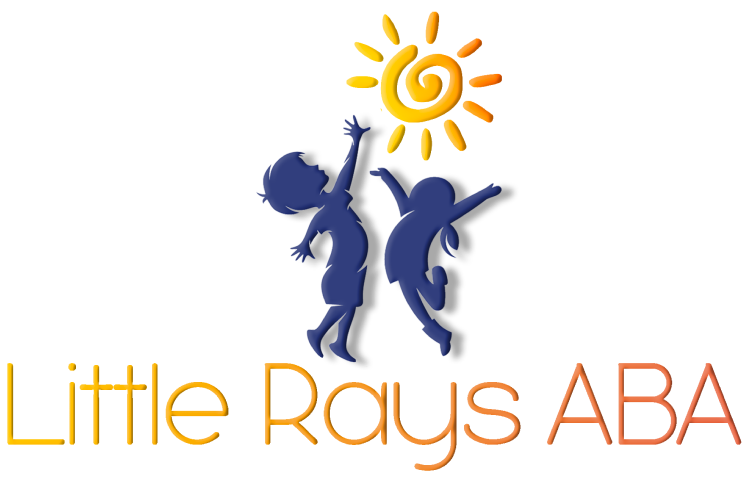If you’ve met one autistic individual, you’ve met just one—because autism varies widely from person to person. Some children develop speech early but struggle socially, while others may have delayed speech but excel in problem-solving. This is why understanding the different types of autism is crucial.
I once worked with a family whose two sons were both diagnosed with autism—but their challenges couldn’t have been more different. The older son had difficulty making eye contact and preferred routines, while his younger brother was highly verbal but struggled with emotional regulation.
Their parents were initially confused about why one child received an Asperger’s diagnosis while the other had classic autism. Learning about the different types helped them tailor their support strategies for each child.
Understanding Autism Spectrum Disorder
What is Autism Spectrum Disorder?
Autism Spectrum Disorder (ASD) is a complex neurodevelopmental condition characterized by challenges in social interaction, communication, and repetitive behaviors. It is referred to as a "spectrum" because it encompasses a wide range of symptoms and abilities.
Individuals with ASD may exhibit varying degrees of difficulty in social situations, communication skills, and behavioral patterns. The onset of symptoms typically occurs in early childhood, and while the exact cause of ASD remains unclear, a combination of genetic and environmental factors is believed to contribute to its development.
Importance of Recognizing Different Types
Recognizing the different types of autism spectrum disorder is crucial for several reasons. Each type presents unique characteristics and challenges, which can significantly impact the individual's daily life and interactions. Understanding these distinctions allows for more tailored support and interventions, enhancing the quality of life for those affected.
Awareness of the various types also helps in reducing stigma and promoting acceptance within society. By educating the public about the diversity of autism, families and communities can foster a more inclusive environment. This understanding encourages empathy and support for individuals with ASD, ultimately leading to better outcomes in education, employment, and social integration.
| Type of Autism Spectrum Disorder | Key Characteristics |
|---|---|
| Autistic Disorder (Classic Autism) | Significant challenges in communication and social interaction, along with restricted interests and repetitive behaviors. |
| Asperger Syndrome | Mild symptoms, with average to above-average intelligence and often strong verbal skills, but difficulties in social situations. |
| Pervasive Developmental Disorder - Not Otherwise Specified (PDD-NOS) | Symptoms that do not fully meet the criteria for other specific types, leading to a range of challenges in social and communication skills. |
| Childhood Disintegrative Disorder | A rare condition where a child develops normally for at least two years, then loses previously acquired skills. |
| Rett Syndrome |
Understanding these types of autism spectrum disorder is essential for providing appropriate support and resources to individuals and their families.
Types of Autism Spectrum Disorder
ASD encompasses a range of conditions that vary in severity and symptoms. Understanding the different types of autism spectrum disorder is essential for recognizing the unique needs of individuals affected by these conditions.
Autistic Disorder (Classic Autism)
Autistic Disorder, often referred to as Classic Autism, is characterized by significant challenges in social interaction, communication, and behavior. Individuals with this type may exhibit a range of symptoms, including:
- Difficulty in understanding social cues
- Limited verbal communication skills
- Repetitive behaviors or interests
- Sensory sensitivities
Classic Autism typically presents in early childhood and can vary widely in severity. Some individuals may require substantial support, while others may be more independent.
Asperger Syndrome
Asperger Syndrome is considered a milder form of autism. Individuals with Asperger Syndrome often have average or above-average intelligence and may possess strong verbal skills. However, they may still face challenges in social interactions and exhibit restricted interests. Common characteristics include:
- Difficulty in understanding social norms
- Intense focus on specific topics or hobbies
- Challenges in forming friendships
- Sensory sensitivities
Unlike Classic Autism, individuals with Asperger Syndrome do not typically have significant delays in language development.
Pervasive Developmental Disorder - Not Otherwise Specified (PDD-NOS)
Pervasive Developmental Disorder - Not Otherwise Specified (PDD-NOS) is a diagnosis used for individuals who exhibit some, but not all, characteristics of autism. This category is often applied when symptoms are present but do not meet the full criteria for other specific types of autism. Characteristics may include:
- Social difficulties
- Communication challenges
- Repetitive behaviors
Individuals with PDD-NOS may experience a range of symptoms and may require varying levels of support. This diagnosis allows for flexibility in recognizing the diverse presentations of autism spectrum disorder.
Additional Types of ASD
In addition to the more commonly recognized types of autism spectrum disorder, there are other forms that are important to understand. These include Childhood Disintegrative Disorder and Rett Syndrome. Each of these conditions has unique characteristics and implications for those affected.
Childhood Disintegrative Disorder
Childhood Disintegrative Disorder (CDD) is a rare condition that typically occurs in children who have developed normally for at least two years. After this period, they experience a significant loss of previously acquired skills in multiple areas, including language, social skills, and motor skills. This regression can be distressing for both the child and their family.
The onset of CDD usually occurs between the ages of 2 and 4 years. The exact cause of this disorder is not well understood, and it is considered to be part of the autism spectrum due to its overlapping symptoms with other types of autism.
Rett Syndrome
Rett Syndrome is a neurodevelopmental disorder that primarily affects girls. It is characterized by normal early development followed by a loss of purposeful hand skills and the development of repetitive hand movements. Children with Rett Syndrome may also experience difficulties with communication, motor skills, and social interactions.
The onset of symptoms typically occurs between 6 months and 2 years of age. Unlike other types of autism spectrum disorder, Rett Syndrome is caused by mutations in the MECP2 gene, which plays a crucial role in brain development.
| Type of Disorder | Age of Onset | Key Characteristics |
|---|---|---|
| Childhood Disintegrative Disorder | 2 - 4 years | Loss of acquired skills in language, social, and motor areas |
| Rett Syndrome | 6 months - 2 years | Loss of purposeful hand skills, repetitive hand movements, communication difficulties |
Understanding these additional types of autism spectrum disorder is essential for recognizing the diverse experiences of individuals on the spectrum. Each type presents unique challenges and requires tailored approaches for support and intervention.
Characteristics and Symptoms
Understanding the characteristics and symptoms of autism spectrum disorder is essential for recognizing the diversity within the types of autism. Each individual may exhibit a unique combination of traits, but there are commonalities and distinct symptoms associated with each type.
Common Characteristics Across Types
Individuals with autism spectrum disorder often share several common characteristics, regardless of the specific type. These may include:
- Difficulty with social interactions and communication
- Challenges in understanding nonverbal cues, such as facial expressions and body language
- Repetitive behaviors or routines
- Intense focus on specific interests or topics
- Sensory sensitivities, such as being overly sensitive to sounds, lights, or textures
These traits can manifest in various ways, affecting how individuals engage with their environment and interact with others.
Unique Symptoms of Each Type
While there are shared characteristics, each type of autism spectrum disorder has its own unique symptoms that can help differentiate them.
Autistic Disorder (Classic Autism)
- Significant delays in language development
- Limited interest in social interactions
- Difficulty in adapting to changes in routine
- May exhibit aggressive or self-injurious behaviors
Asperger Syndrome
- Average to above-average intelligence
- Strong verbal skills but challenges in social communication
- Intense focus on specific interests, often leading to expertise in those areas
- Difficulty understanding social norms and cues
Pervasive Developmental Disorder - Not Otherwise Specified (PDD-NOS)
- Symptoms that do not fully meet the criteria for other types of autism
- Variability in social and communication skills
- May exhibit some repetitive behaviors or restricted interests, but to a lesser degree
Childhood Disintegrative Disorder
- Normal development for the first few years, followed by a significant loss of skills
- Regression in language, social skills, and motor skills
- May develop seizures or other neurological issues
Rett Syndrome
- Primarily affects females and involves normal early development followed by a loss of purposeful hand skills
- Development of repetitive hand movements, such as hand-wringing
- Significant cognitive impairment and challenges with mobility
Recognizing these characteristics and symptoms is crucial for understanding the diverse nature of autism spectrum disorder. Each individual is unique, and their experiences may vary widely within the spectrum.
Diagnosis and Treatment
Diagnostic Process
The diagnostic process for autism spectrum disorder involves several steps to ensure an accurate assessment. It typically begins with a comprehensive evaluation by a healthcare professional, which may include a pediatrician, psychologist, or psychiatrist.
The following components are often part of the diagnostic process:
- Developmental History: Gathering information about the individual's developmental milestones, including language, social skills, and behavior.
- Behavioral Observations: Observing the individual in various settings to assess social interactions, communication skills, and repetitive behaviors.
- Standardized Assessments: Utilizing specific tools and questionnaires designed to evaluate autism symptoms and behaviors.
- Collaboration with Caregivers: Engaging parents and caregivers to provide insights into the individual's behavior and development.
The diagnosis is based on criteria outlined in the Diagnostic and Statistical Manual of Mental Disorders (DSM-5). It is essential for the evaluation to be thorough, as the symptoms and characteristics of ASD can vary widely among individuals.
Individualized Treatment Approaches
Treatment for autism spectrum disorder is not one-size-fits-all. Individualized treatment approaches are crucial to address the unique needs of each person with ASD. Common strategies include:
- Behavioral Interventions: Techniques such as Applied Behavior Analysis (ABA) focus on reinforcing positive behaviors and reducing challenging ones.
- Speech and Language Therapy: This therapy helps improve communication skills, including verbal and non-verbal communication.
- Occupational Therapy: Aims to enhance daily living skills and sensory integration, helping individuals navigate their environment more effectively.
- Social Skills Training: Focuses on teaching social interactions and understanding social cues, which can be challenging for individuals with ASD.
- Medication: In some cases, medication may be prescribed to manage specific symptoms, such as anxiety or attention difficulties.
The effectiveness of these approaches can vary, and ongoing assessment is necessary to adapt the treatment plan as needed. Collaboration among healthcare providers, educators, and families is essential to support the individual’s development and well-being.
Supporting Individuals with ASD
Importance of Understanding Differences
Understanding the various types of autism spectrum disorder is crucial for providing effective support. Each individual with ASD may exhibit a unique combination of strengths and challenges. Recognizing these differences allows caregivers, educators, and peers to tailor their approaches to meet the specific needs of each person.
Awareness of the diversity within autism can foster empathy and reduce stigma. It encourages a more inclusive environment where individuals with ASD can thrive. By understanding the characteristics associated with each type of autism, society can better appreciate the capabilities and potential of autistic individuals.
Providing Acceptance and Support
Acceptance is a vital component in supporting individuals with autism. Creating an environment that embraces differences can significantly enhance the quality of life for those on the spectrum. This includes promoting understanding among family members, friends, and the community.
Support can take many forms, including:
- Emotional Support: Providing reassurance and understanding to help individuals navigate social situations.
- Educational Support: Implementing individualized education plans (IEPs) that cater to the learning styles of autistic students.
- Social Skills Training: Offering programs that teach essential social skills to improve interactions with peers.
Understanding the different types of autism is just the first step. At Little Rays ABA, we specialize in tailored ABA therapy programs designed to meet each child’s unique needs. Whether your child has classic autism, Asperger’s, or another ASD subtype, our expert team is here to provide compassionate, evidence-based support. Schedule a consultation with Little Rays ABA and help your child thrive!
FAQs
What are the main types of autism spectrum disorder?
Autism Spectrum Disorder includes classic autism, Asperger’s syndrome, Pervasive Developmental Disorder-Not Otherwise Specified (PDD-NOS), Childhood Disintegrative Disorder, and Rett syndrome.
How do the different types of autism affect daily life?
Each type of autism presents unique challenges in communication, social interaction, and behavior. Some individuals may require more support, while others are highly independent.
Can autism change over time?
While autism itself doesn’t change, symptoms and challenges can evolve with age. With the right interventions, many individuals develop improved coping skills and communication abilities.
Sources:
- https://www.autismspeaks.org/what-autism
- https://www.autismparentingmagazine.com/know-more-about-kanner-syndrome/
- https://pmc.ncbi.nlm.nih.gov/articles/PMC10217468/
- https://www.mountsinai.org/health-library/diseases-conditions/childhood-disintegrative-disorder
- https://reverserett.org/about-rett-syndrome/
Unlock Your Child's Potential with Expert ABA Therapy!
At Little Rays ABA, we provide compassionate, evidence-based ABA therapy to help children with autism thrive. Our personalized approach fosters growth in communication, social skills, and independence.
Get In Touch With Us Today to Get Started With ABA Therapy!
Related Posts
MENU
GET IN TOUCH
7117 San Salvador Dr Boca Raton, FL 33433
3200 Collins Ave Miami Beach, FL 33140





